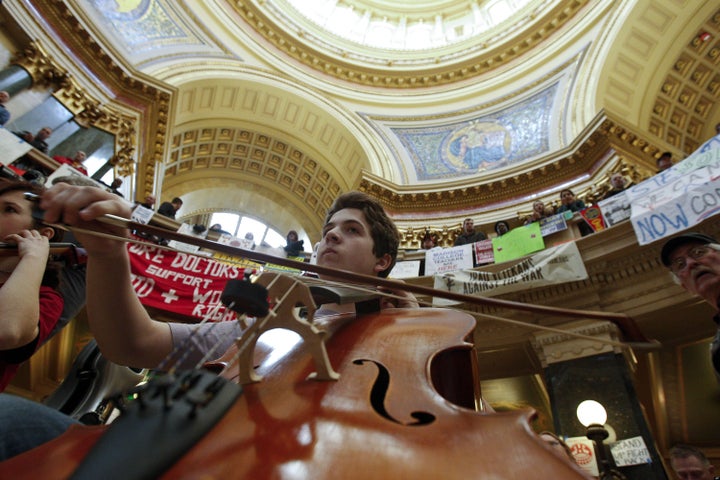
WASHINGTON -- The real political math in Wisconsin isn't about the state budget or the collective-bargaining rights of public employees there. It is about which party controls governorships and, with them, the balance of power on the ground in the 2012 elections.
For all of the valid concern about reining in state spending -- a concern shared by politicians and voters of all labels -- the underlying strategic Wisconsin story is this: Gov. Scott Walker, a Tea Party-tinged Republican, is the advance guard of a new GOP push to dismantle public-sector unions as an electoral force.
Last fall, GOP operatives hoped and expected to take away as many as 20 governorships from the Democrats. They ended up nabbing 12.
What happened? Well, according to postgame analysis by GOP strategists and Gov. Haley Barbour of Mississippi -- who chaired the Republican Governors Association in 2010 -- the power and money of public-employee unions was the reason.
"We are never going to win most of these states until we can do something about those unions," one key operative said at a Washington dinner in November. "They have so much incentive to work hard politically because they are, in effect, electing their own bosses -- the Democrats who are going to pay them better and give them more benefits. And the Democrats have the incentive to be generous."
This is how top Republicans see the matter: a vicious cycle of union-to-Democrat-to-union power that they are determined to break.
And there is a lot of money and manpower involved. In the 2010 cycle, the American Federation of State, Country and Municipal Employees spent $87 million, making AFSCME the biggest single source of independent campaign spending last year -- bigger than Karl Rove's American Crossroads.
The manpower is even more important, though, especially that of AFSCME and the National Education Association. The public-employee troops are concentrated, in absolute numbers and by percentage, in 18 states. In California alone, there are 1.4 million government employees represented by unions, according to AFL-CIO numbers. In Illinois, it's more than 400,000; in New York, 1.1 million.
Last fall, Republicans took away governorships in four of these public union-heavy states: Ohio (where 46.2 percent of public employees are represented by unions), Michigan (51.7 percent) , Pennsylvania (53.4 percent) and Wisconsin (49.6 percent). It was an impressive Rust Belt sweep.
But the GOP had been hoping for much more in other such states. They thought they had good chances in California (with 59.6 percent unionized public employees), Minnesota (59.2 percent), Oregon (56.9 percent), Illinois (52.6 percent), Connecticut (66.4 percent), Massachusetts (64.4 percent), New Hampshire (50.3 percent) and Rhode Island (66.6 percent).
Republicans lost them all, though many quite narrowly.
The GOP strategic aim is simple enough. If they can abolish union collective-bargaining rights, they can undermine the automatic payment of dues to the public-employee union treasuries. Shrinking those treasuries and reducing the union structure and membership will make it harder for Democrats and their allies to communicate directly with workers.
And under the infamous Citizens United Supreme Court decision, unions -- like corporations -- are free to spend as much as they want directly advocating for a candidate. That makes the math even more urgent as the 2012 election season approaches.
